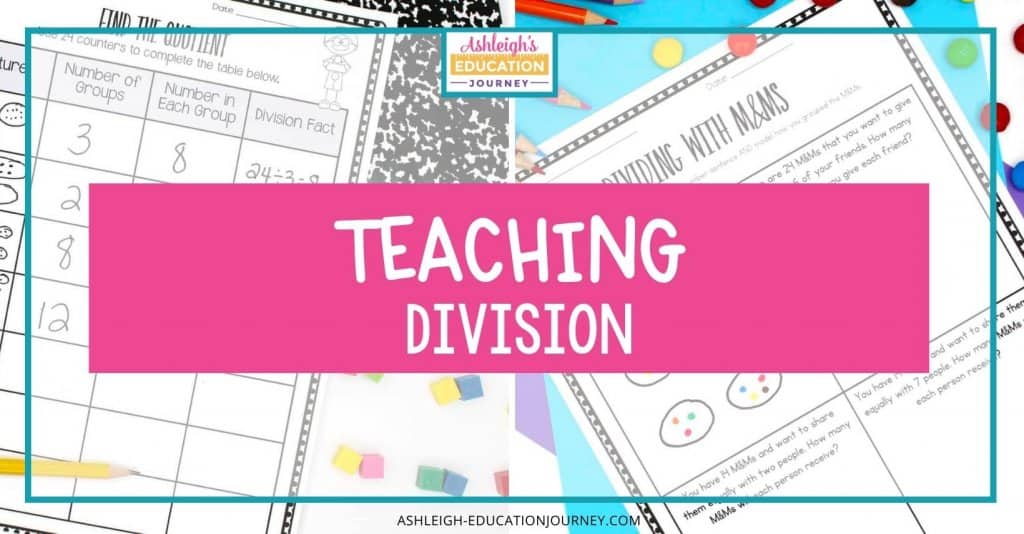
We know that teaching division concepts can be tricky and confusing for many students. When teaching 3rd grade, this was the unit when a large group of students would begin to fall behind. There are so many potential reasons for this struggle: lack of number sense, multiplication facts, and not having time to develop the foundational concepts.
When introducing and teaching division, it’s essential to slow down and provide students with multiple hands-on learning opportunities. Students need time to explore connections and relationships between multiplication and division, as well as division and subtraction.
This post focuses on introducing and teaching division concepts, which is typically introduced in third grade. If you’re looking for ideas for teaching more advanced division concepts, be sure to check out this post. You can find all of the lessons in this blog post here.
In this post:
- Hands-On
- Repeated Subtraction
- Division in Context
- Teaching the Concept of Division: Arrays
- Teaching the Concept of Division: Critical Thinking
- Remainders
Hands-On
Always introduce division with hands-on activities that guide students into seeing the relationship between multiplication and division. It doesn’t particularly matter what manipulative you use. It’s just important that students work with concrete objects. During the instruction, I also continuously clarify the number of groups vs. the number in each group. While this may not initially seem important, this will come into play as students solve word problems.
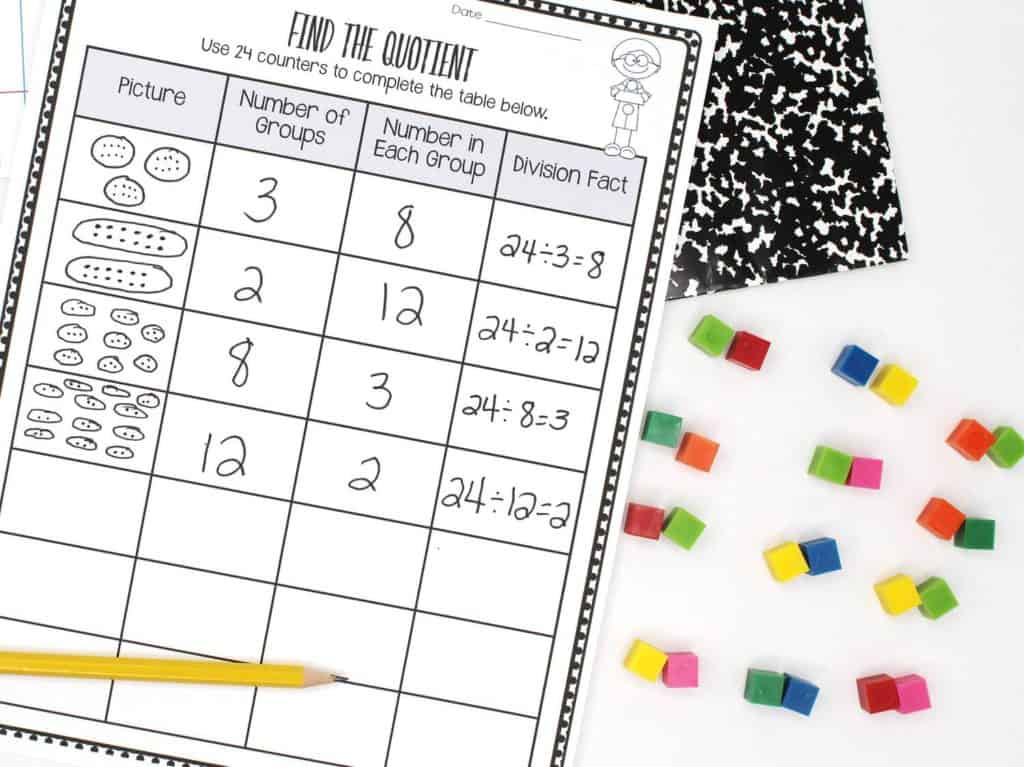
In the activity above, you can see how students represent division problems with pictorial models and a division equation. They also discern between the number of groups and the number in each group. This lesson can be differentiated by changing the total number of manipulatives.
Full Disclaimer: I created the lesson below due to a large purchase of mini pails and seashells at Target Dollar Spot. However, even without the little “extras” it’s still beneficial to give students more hands-on time exploring division. I like to use this lesson to introduce remainders.
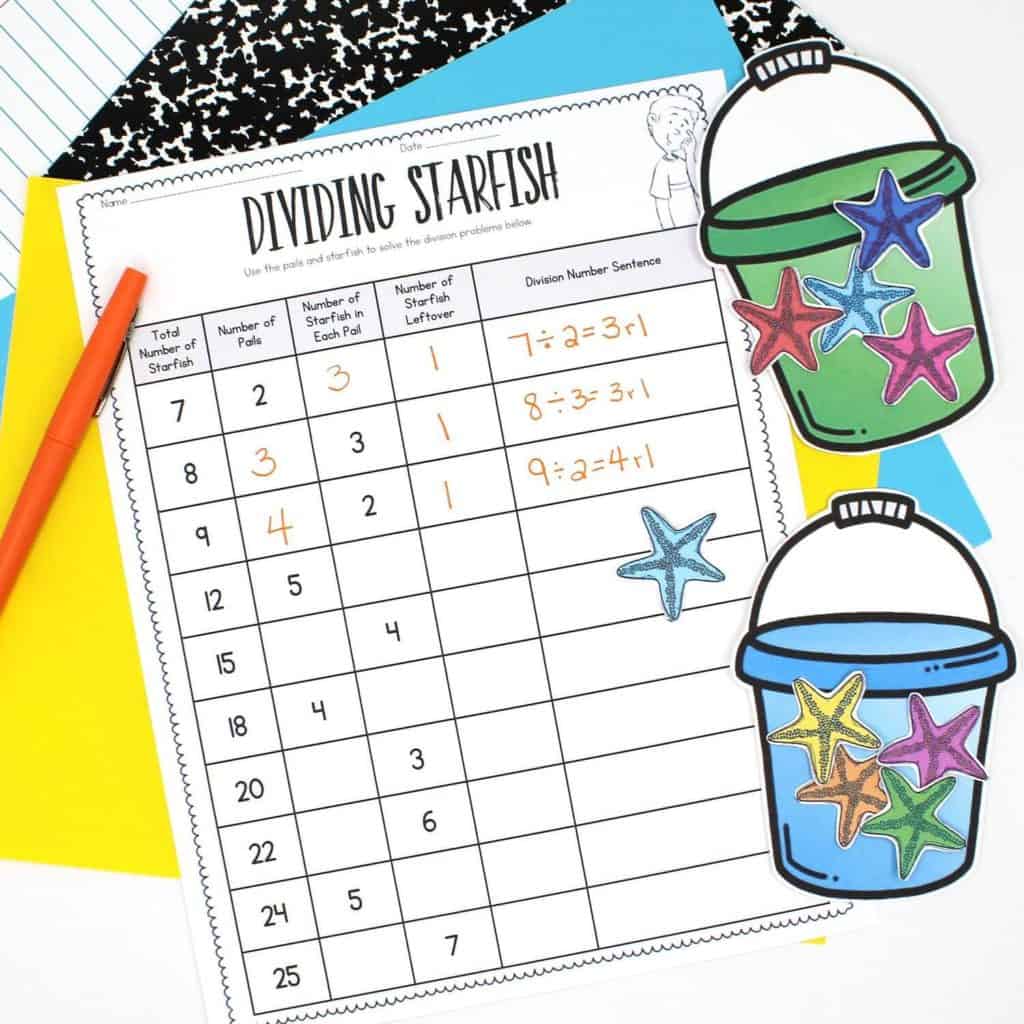
As you discuss the equations, be sure to avoid statements such as, “The big number goes first.” While this is typically true in third grade, that won’t always be the case.
Repeated Subtraction
When teaching the concept of division, it’s important that students understand that they can divide by using repeated subtraction of equal groups. While this is a great strategy for solving division problems, I do try to push students on and not allow them to become stuck only using this strategy. Some students find it difficult to transition from additive thinking to multiplicative thinking, which is why a good number sense routine is so important.
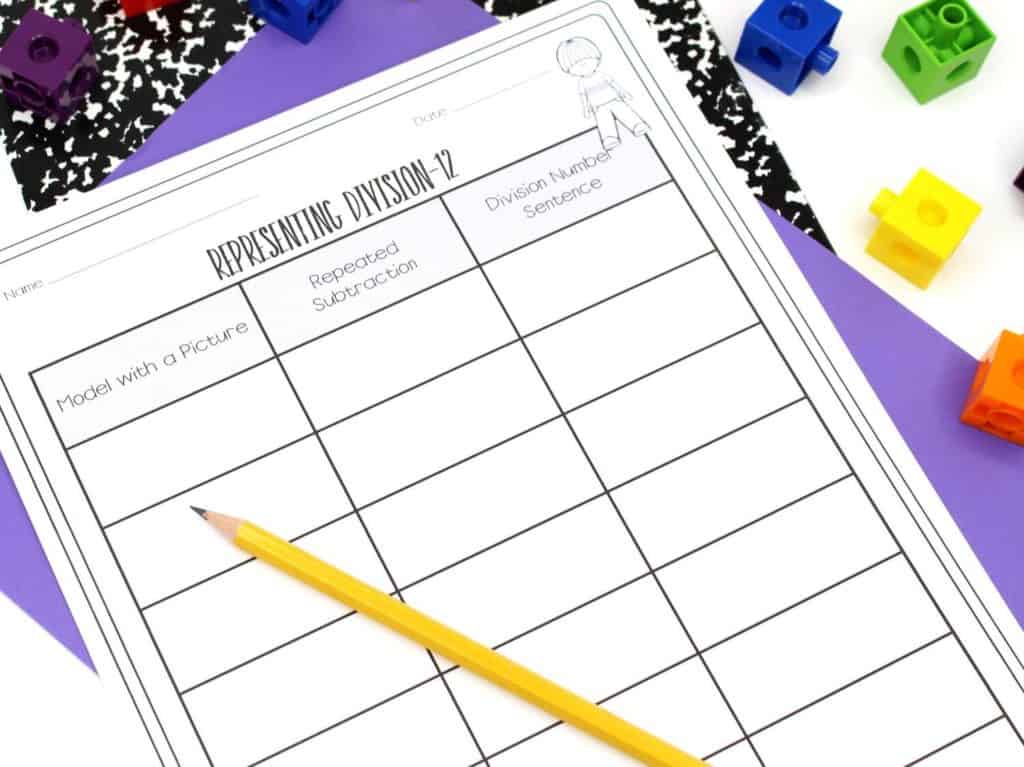
Teaching Division in Context
As with other math units, it’s important to teach the concept of division in context. Don’t wait until the end of your division unit to introduce word problems. It doesn’t have to be torture for you or your students! You can absolutely make division word problems fun. One sure strategy is to incorporate food like in this M&M lesson.
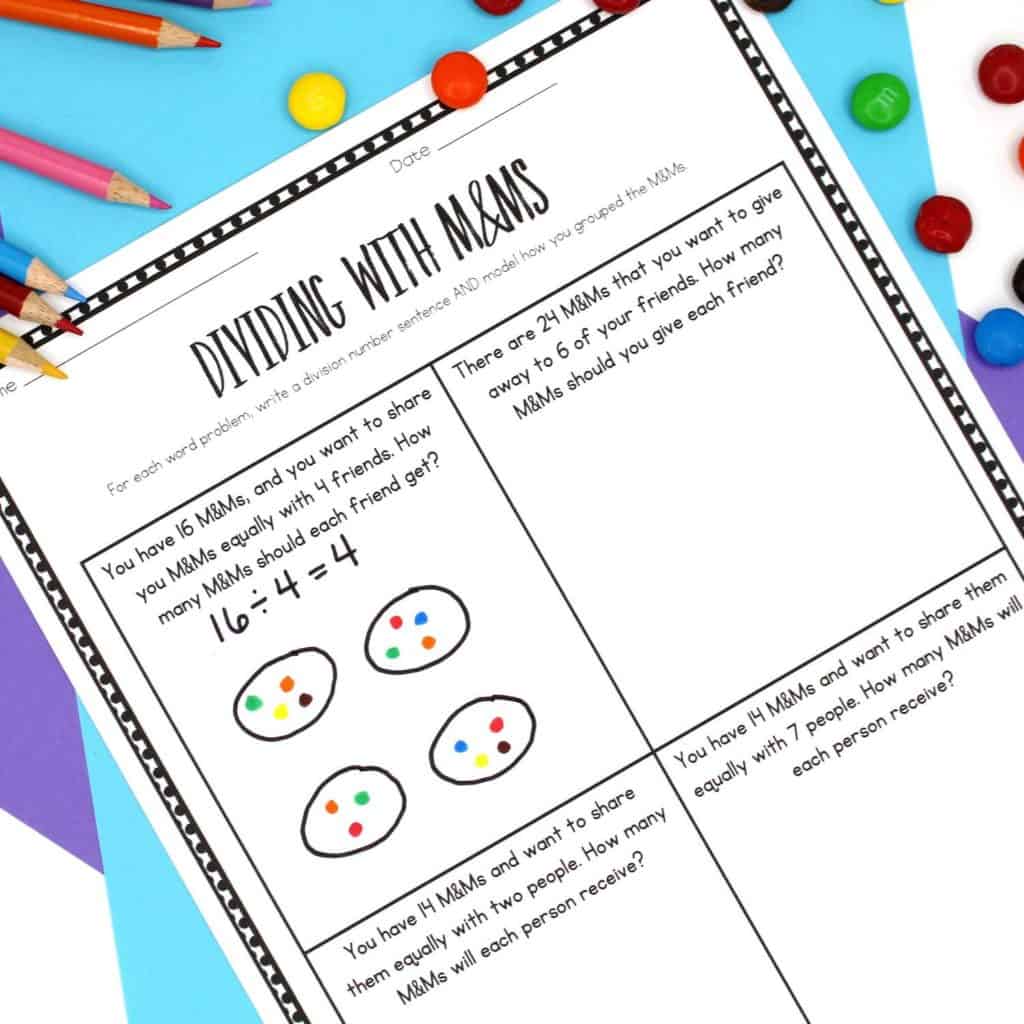
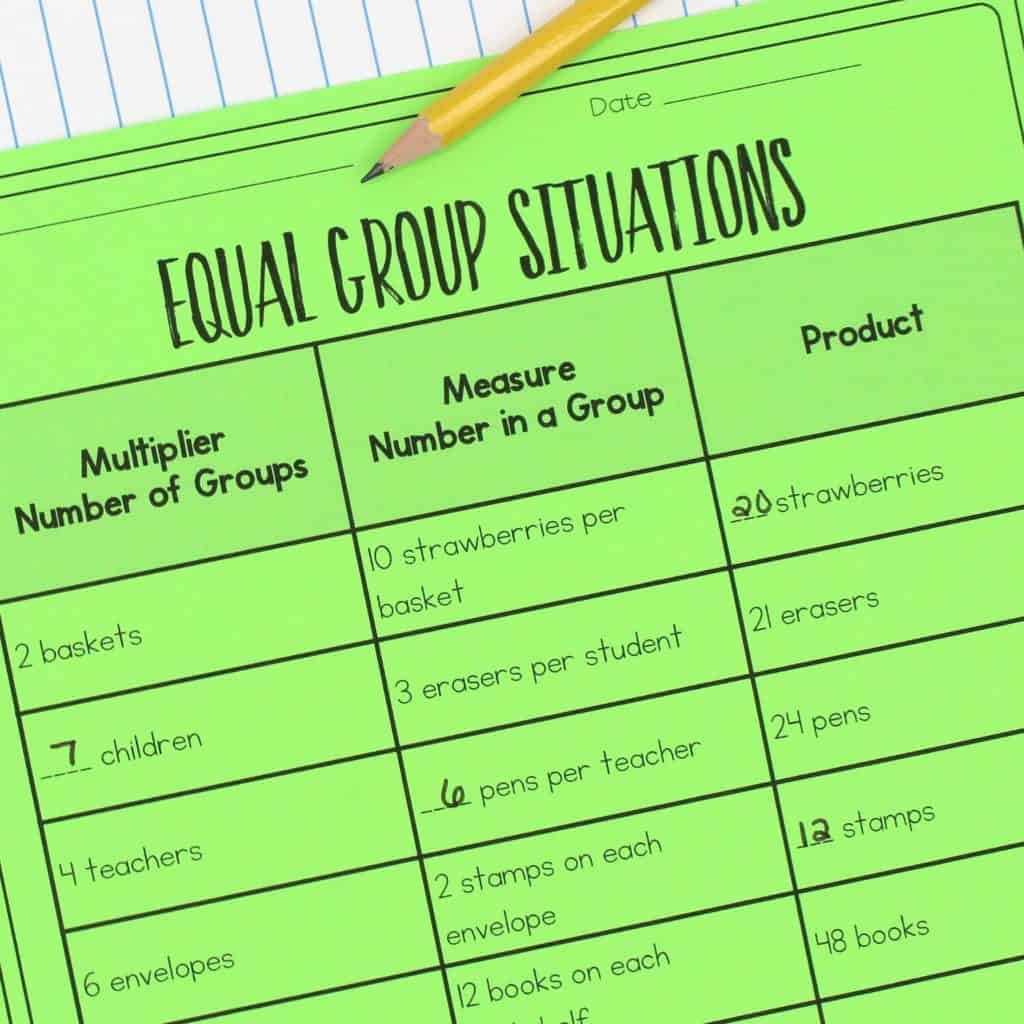
Letting students see division in real-life situations makes it so much easier to teach the concept of division. Throughout the unit, I continuously require students to represent their work through situation equations, as this helps students understand the parts of the word problem.
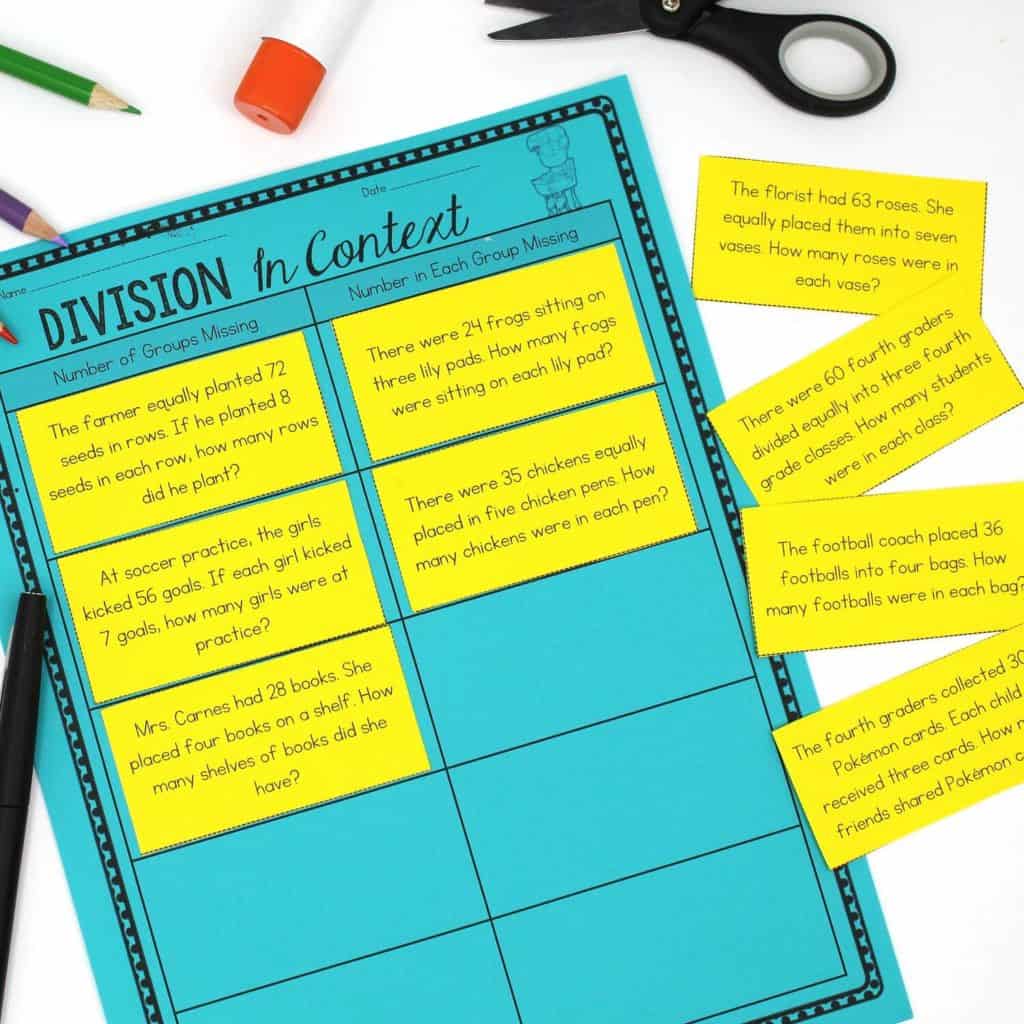
I am forever a fan of color-coding, and this is absolutely the case for word problems. I have students highlight the number of groups with pink, number in each group with green, and the total in orange. This is a great way to force students to slow down and think about the meaning of the problem.
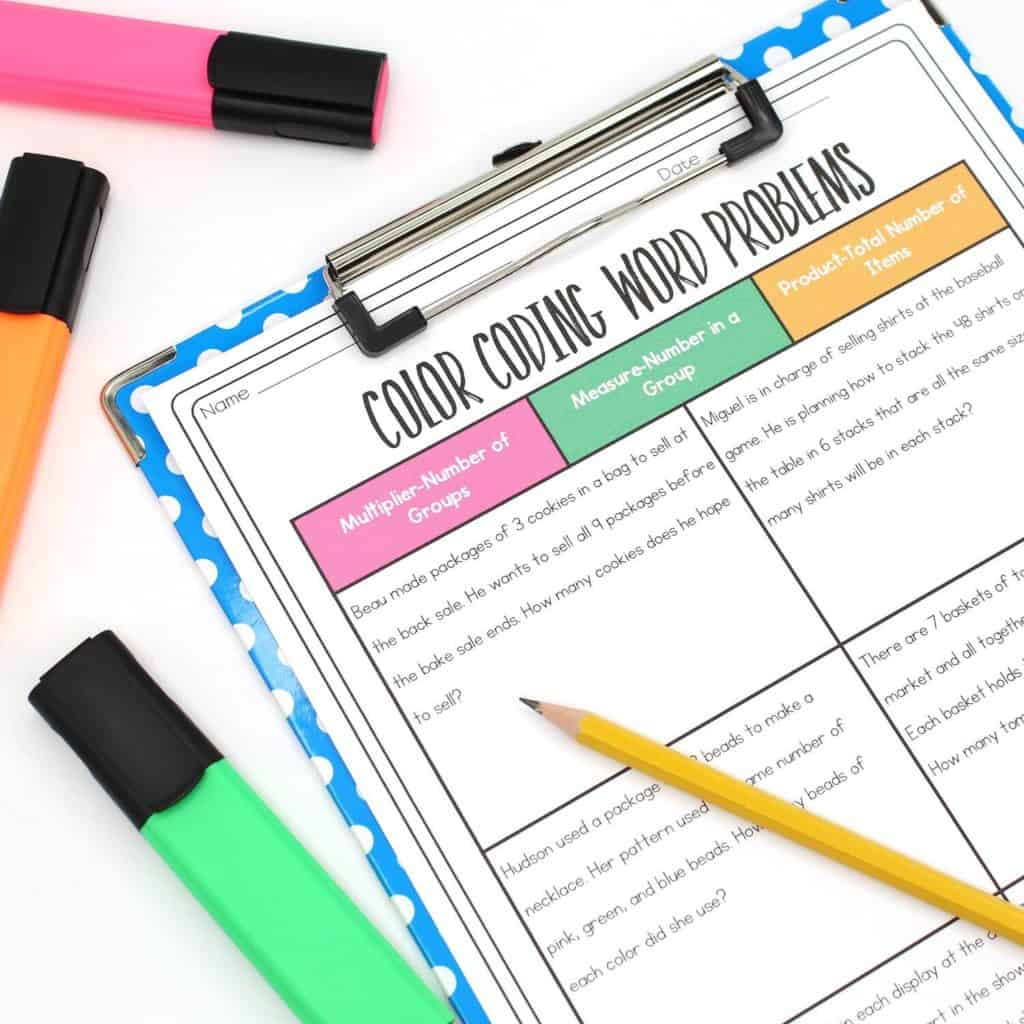
Teaching Division: Arrays
When I first started teaching 3rd grade, I introduced arrays at the very beginning of my division unit. That combination was the source of considerable anxiety and frustration! By far, the most common problem was for students to build an array that modeled multiplication, rather than division. I’ve since learned to wait a bit and let students solidify their understanding of division before adding arrays to the mix.
Now that I’ve taught 4th grade for several years, I’ve also seen the importance of students having a firm understanding of division with arrays. Once again, you can use food to keep it interesting for students.
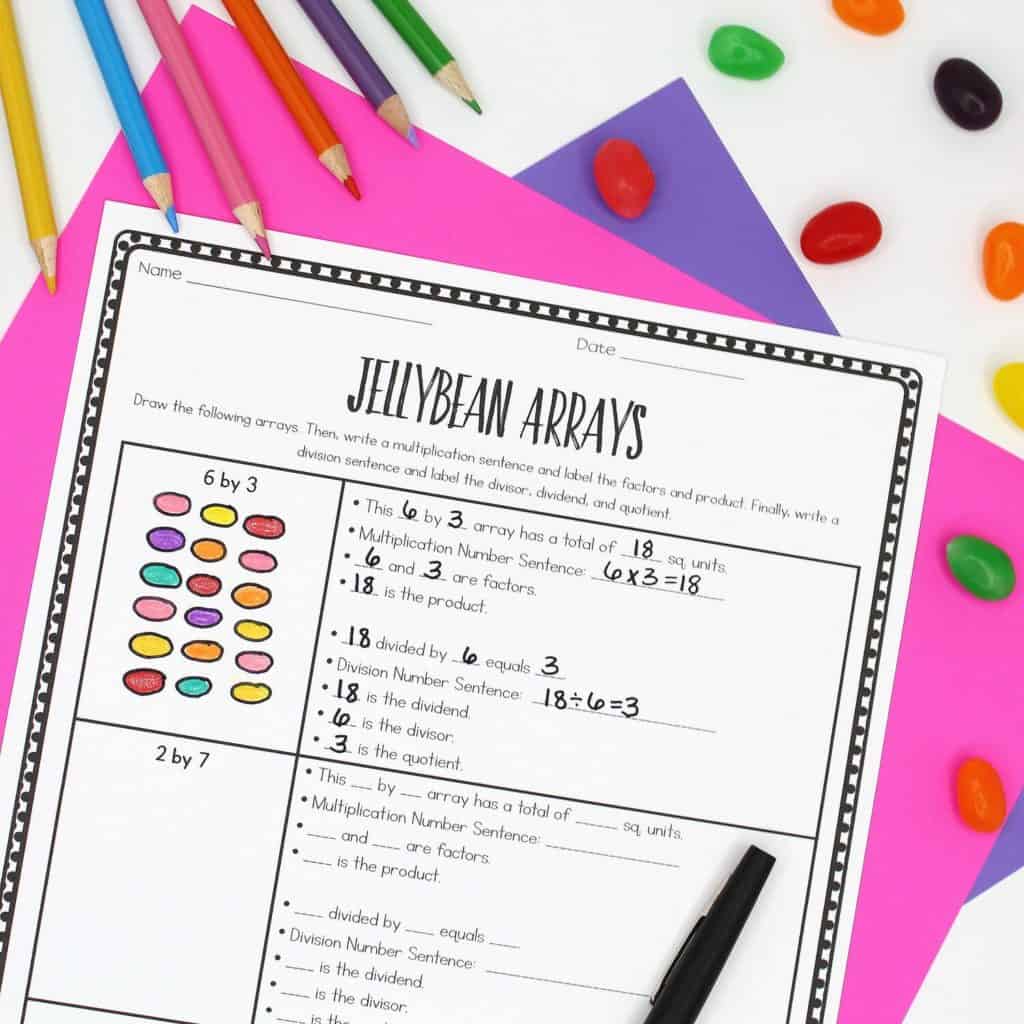
Teaching the Concept of Division: Critical Thinking
Even though I do embed word problems in almost all of my division instruction, the initial word problems are somewhat basic. I give students a little time before I begin to raise the rigor.
In the activity below, students are given situations and they write multiplication and division word problems to represent the given situation. That’s really challenging for third graders, but it’s such a powerful lesson.
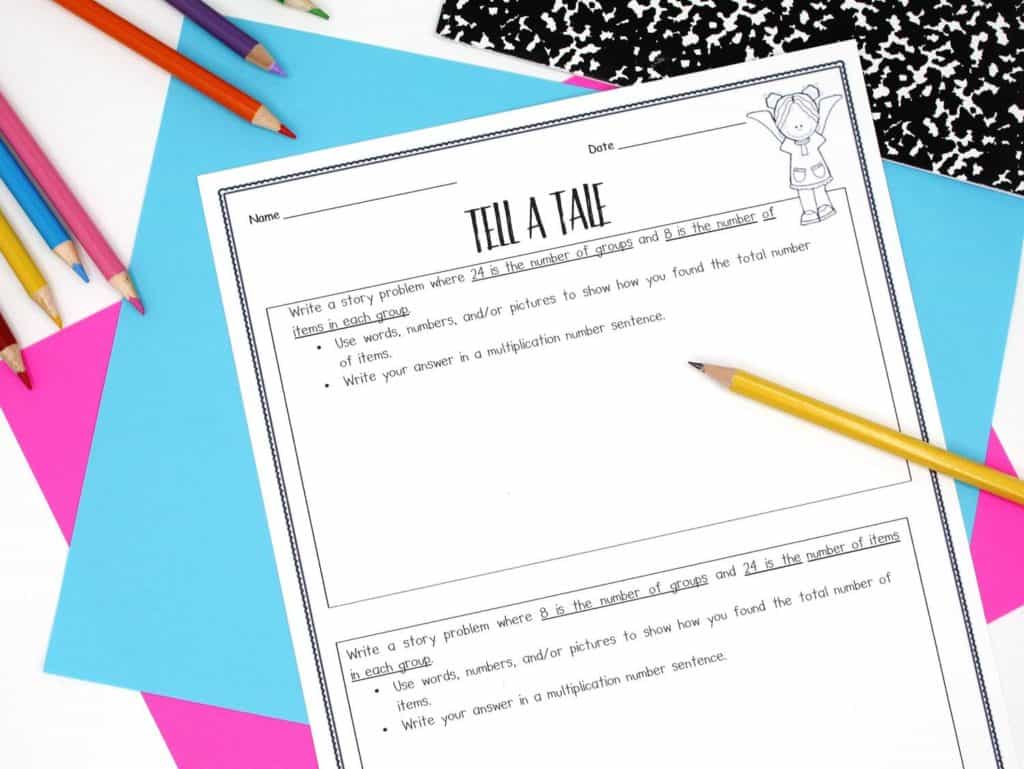
In another teaching division lesson, students use pattern blocks to solve critical thinking problems. By this point in the unit, students begin quickly seeing patterns and division “clicks” for most students. Others will need extra time, and that’s okay.
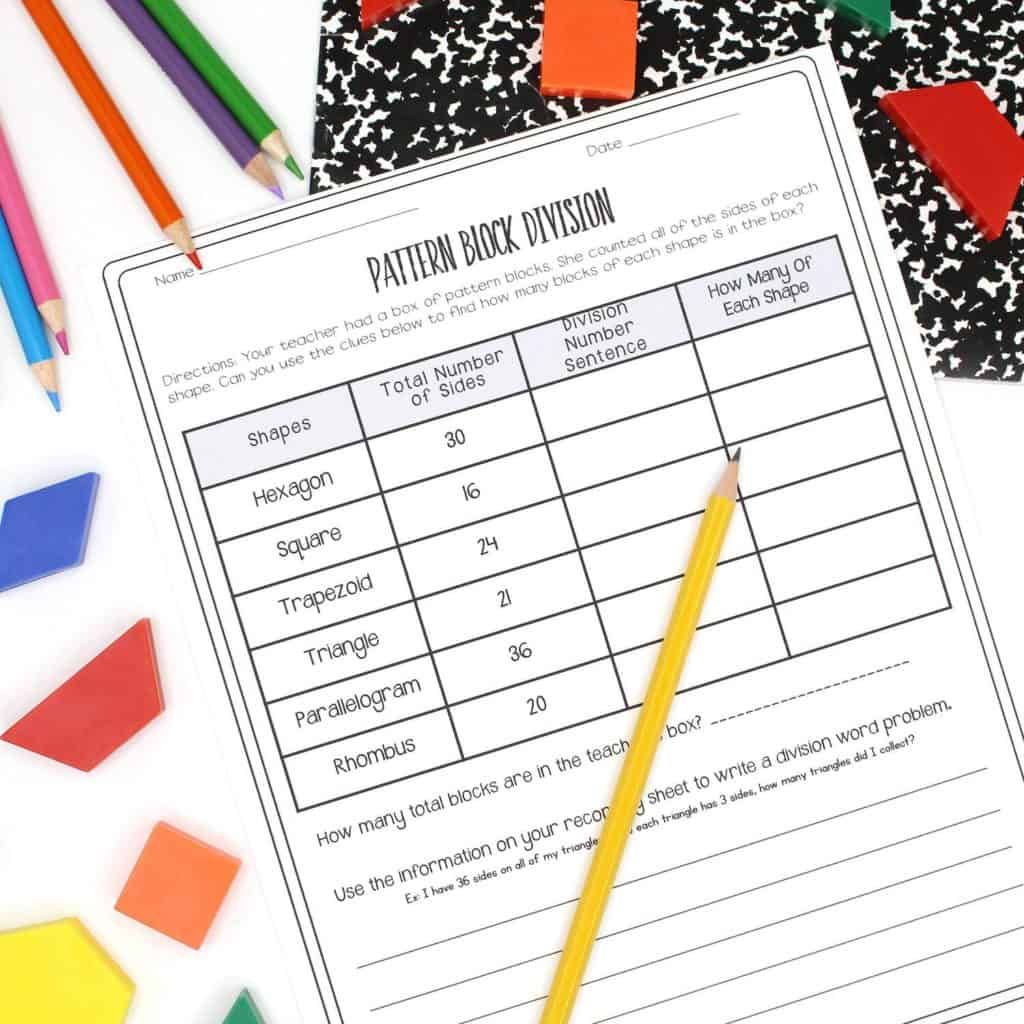
Some of the lessons require considerable problem solving and the application of multiplication and division concepts. One of my favorites are asking if division is commutative and then having students find errors in models of division word problems.
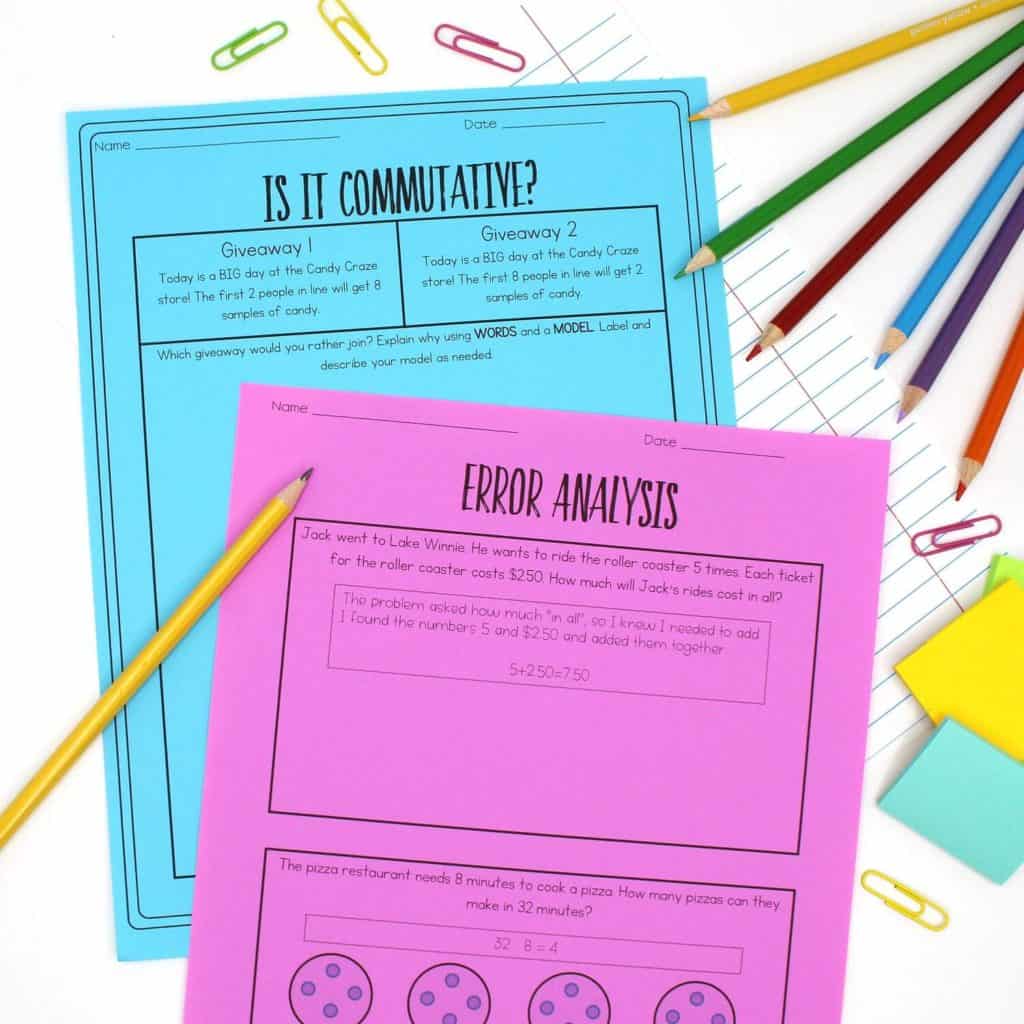
Teaching Division – Remainders
How deep you go into remainders depends on your standards and your students. I saved the most challenging lessons that focus on interpreting the remainder for the end of the division unit. In the Party Planner activity students solve real-word problems to determine how many packages of items they need to purchase for a party. Too often students want to write the answer to the division problem without thinking about what the question is actually asking, so this is challenging for many students.
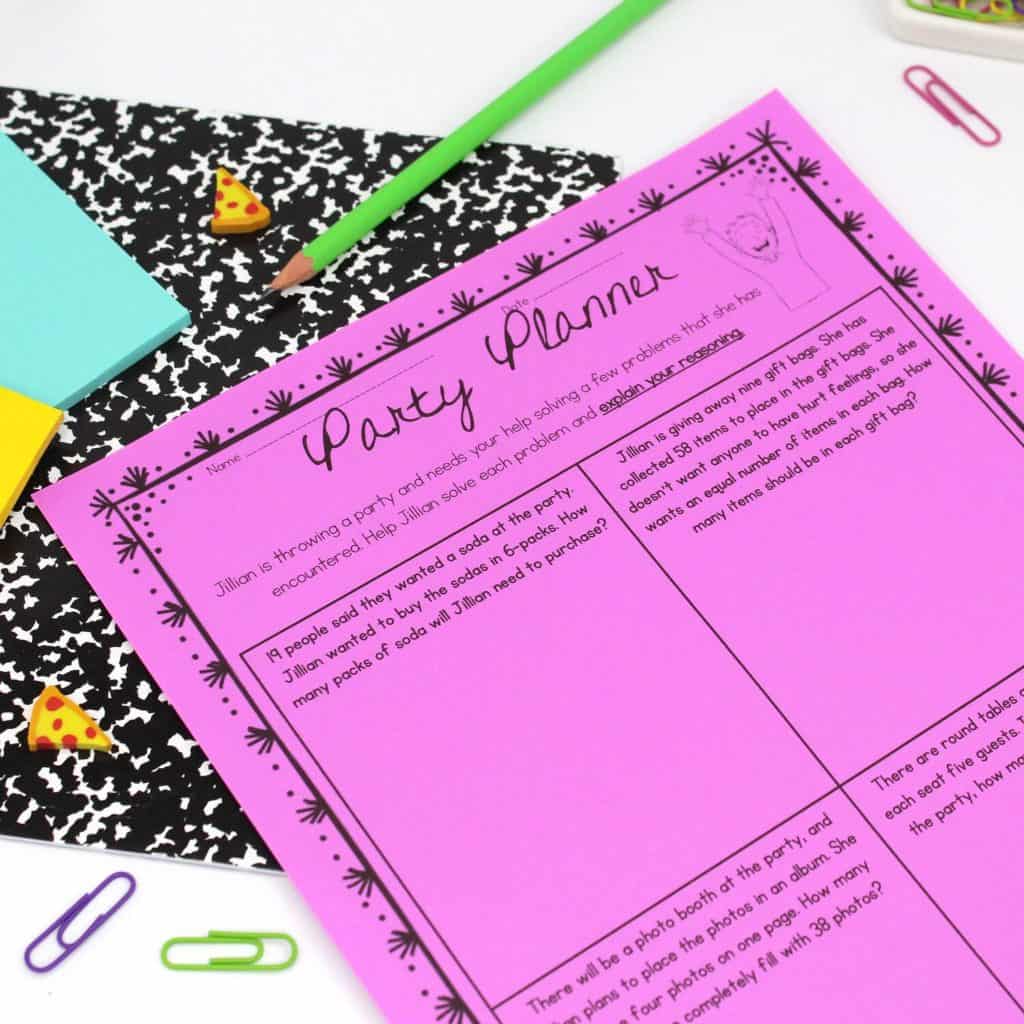
You can have students write word problems again, but this time students finish the question two different ways. In one scenario they write a problem where they won’t use the remainder. In the other scenario, they write a problem where they will need to add another group.
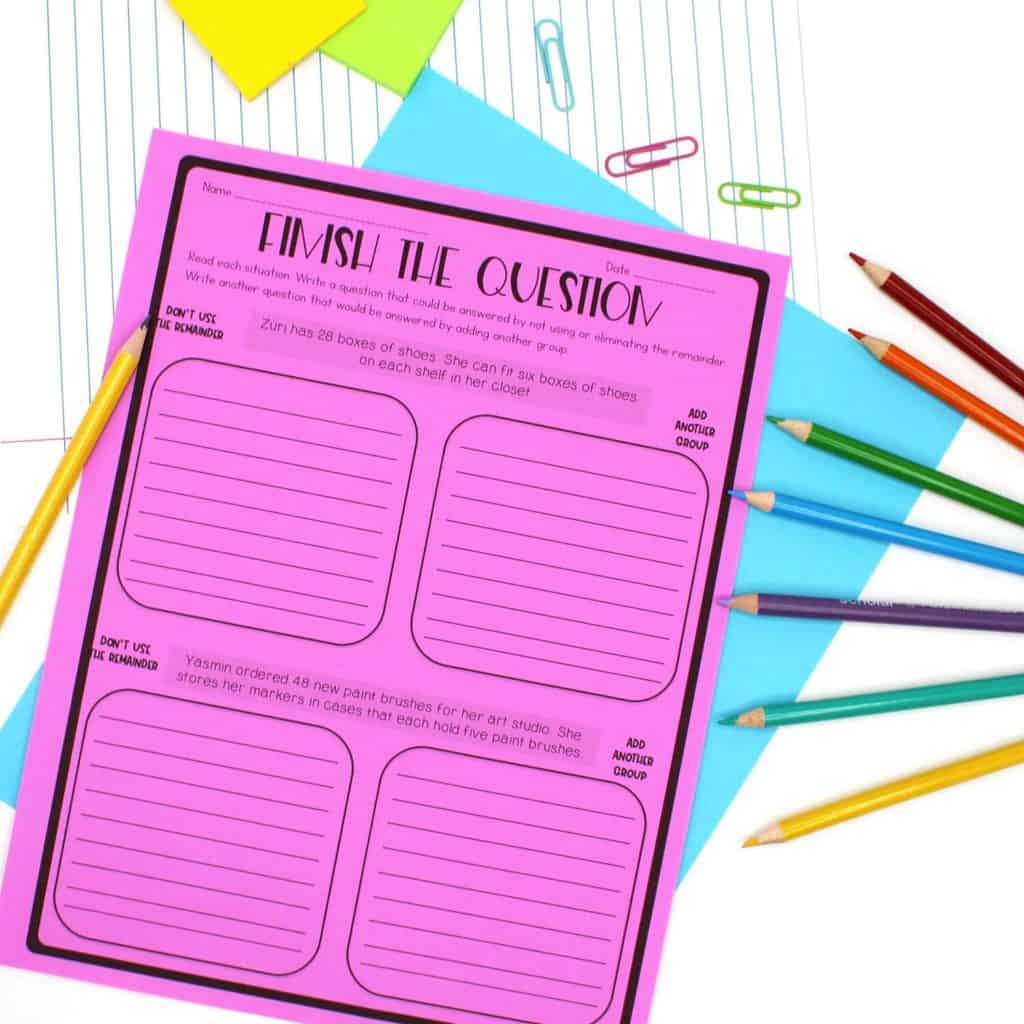
All of the lessons in this part are a part of my 3rd Grade Multiplication and Division Unit.



That was a really great. Helpful and insightful, as always! Thanks for the data and the supporting information.
Really good blog, I have enjoyed the interesting content
Thanks for sharing this amazing website between us. I really thankful to you. Thanks
I love the way you write and share your niche! Very interesting and different! Keep it coming!
I would never have thought of on my own. Your content gives readers things to think about in an interesting way.
All kind information visit here. For more information visit our website
very nice thank you for sharing this
Your teaching ideas are awesome, love it.
Every teacher should try your methods, these are awesome.
I got too much interesting stuff on your blog. I guess I am not the only one having all the enjoyment here! Keep up the good work.
Thank you so much!